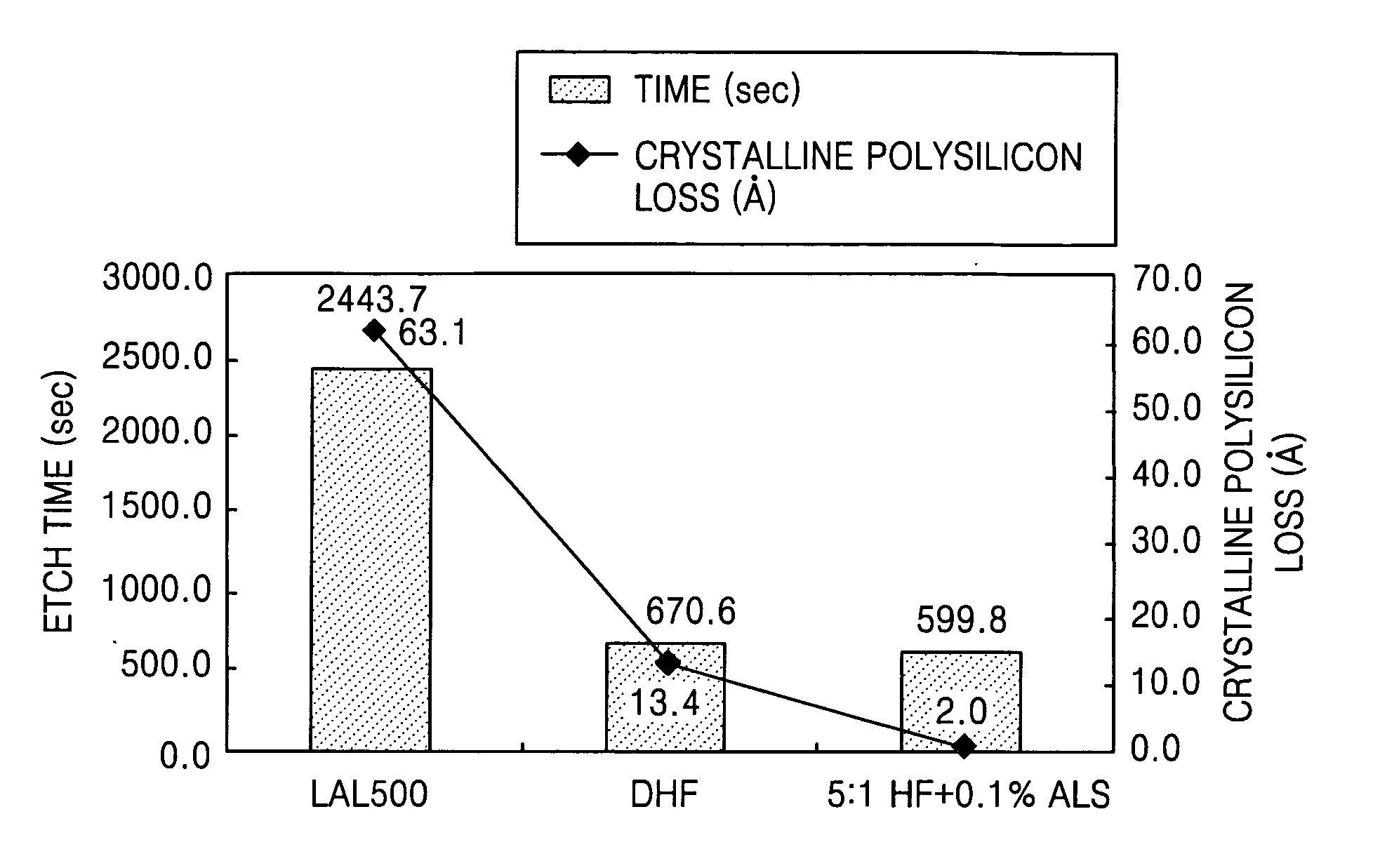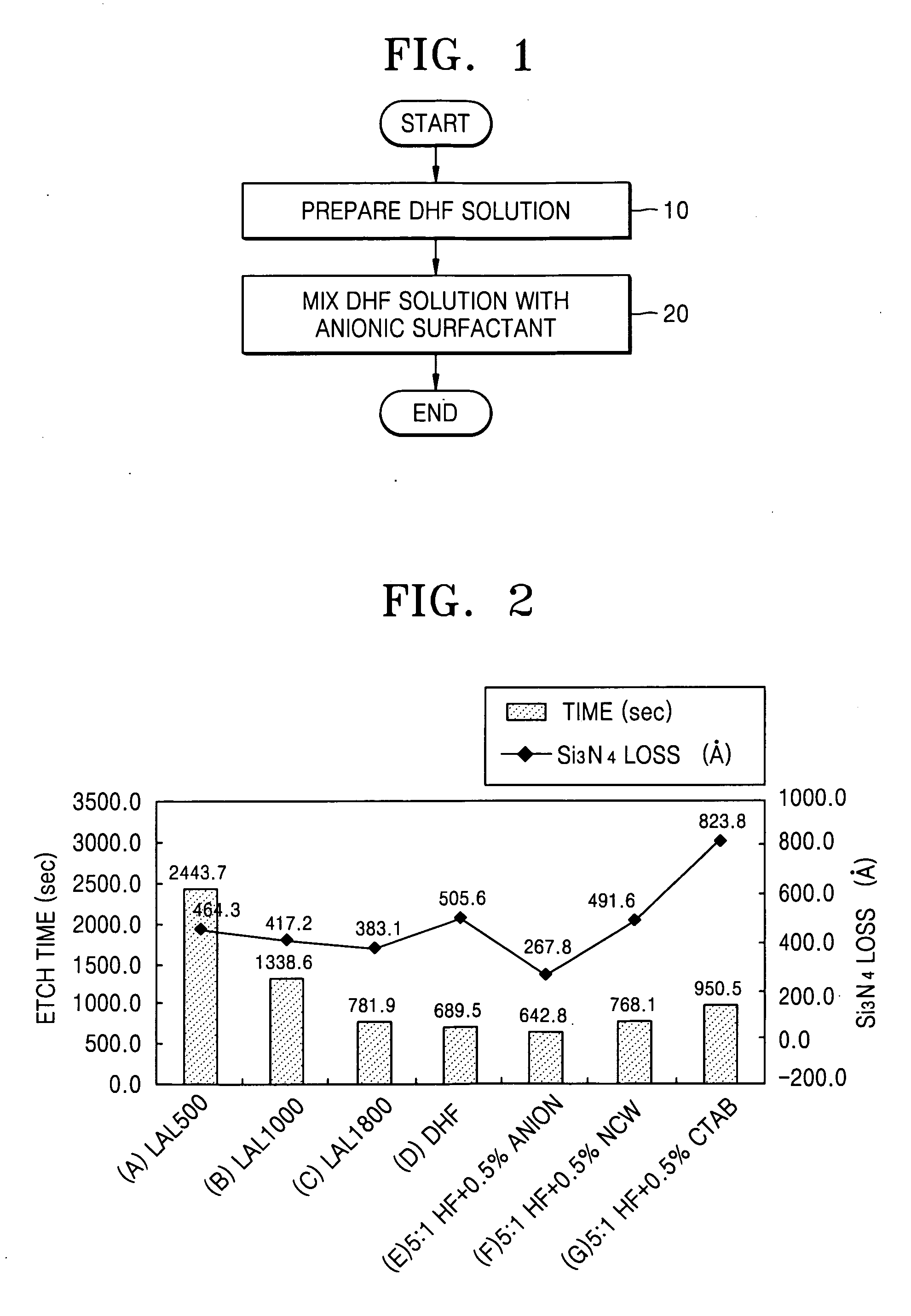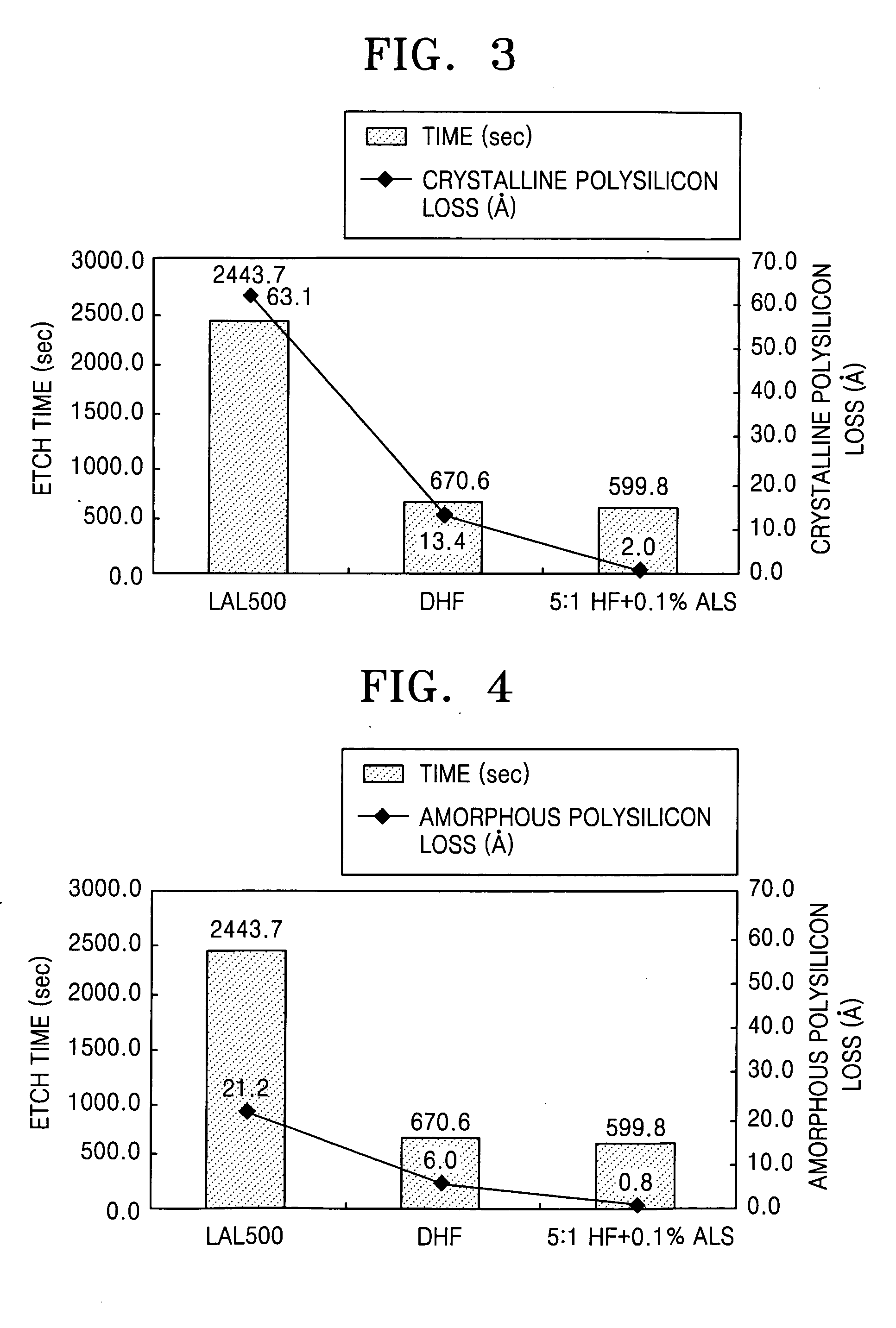Etching solution for removal of oxide film, method for preparing the same, and method of fabricating semiconductor device
- Summary
- Abstract
- Description
- Claims
- Application Information
AI Technical Summary
Benefits of technology
Problems solved by technology
Method used
Image
Examples
experimental example 1
[0048] 0.5 wt % of ammonium lauryl sulfate (ALS) (based on the total weight of an etching solution) used as an anionic surfactant was added to a DHF solution obtained by mixing deionized water and a 50% HF solution in a 5:1 volume ratio to prepare the etching solution.
[0049] A borophosphosilicate glass (BPSG) film (9,000 Å) and a plasma-enhanced tetraethylorthosilicate glass (PE-TEOS) film (16,000 Å) were sequentially deposited on a wafer to form an oxide film with a total thickness of 25,000 Å. While the oxide film was etched using the etching solution at room temperature (25° C.), a silicon nitride (Si3N4) film was simultaneously etched using the same etching solution to measure the loss of the silicon nitride film.
[0050] Measurement results for the etch time of the oxide film and the loss of the silicon nitride film are shown in FIG. 2. In FIG. 2, “(E) 5:1 HF+0.5% anion” represents an etching experiment using the etching solution prepared in Experimental Example 1.
[0051]FIG. 2...
experimental example 2
[0054] 0.1 wt % of ALS (based on the total weight of an etching solution) used as an anionic surfactant was added to a DHF solution obtained by mixing deionized water and a 50% HF solution in a 5:1 volume ratio to prepare the etching solution.
[0055] A BPSG film (9,000 Å) and a PE-TEOS film (16,000 Å) were sequentially deposited on a wafer to form an oxide film with a total thickness of 25,000 Å. While the oxide film was etched using the etching solution at room temperature (25° C.), a crystalline polysilicon film was simultaneously etched using the same etching solution to measure the loss of the crystalline polysilicon film. Here, the crystalline polysilicon film was obtained by forming an amorphous polysilicon film followed by annealing at 850° C. for 30 minutes.
[0056] Measurement results for the etch time of the oxide film and the loss of the crystalline polysilicon film are shown in FIG. 3. In FIG. 3, “5:1 HF+0.1% ALS” represents an etching experiment using the etching solutio...
experimental example 3
[0059] This Experimental Example was performed in the same manner as in Experimental Example 2 except that an amorphous polysilicon film was used instead of the crystalline polysilicon film and the results are shown in FIG. 4. The amorphous polysilicon film was obtained in the same manner as that used in Experimental Example 2 and annealing of the amorphous polysilicon film was omitted.
[0060]FIG. 4 also shows the etching experiment results for the oxide film and the amorphous polysilicon film using surfactant-free etching solutions as controls, i.e., LAL500 and DHF (deionized water:50% HF=5:1).
[0061] As seen from FIG. 4, when the oxide film and the amorphous polysilicon film were simultaneously etched using the etching solution containing ALS as the anionic surfactant according to the present invention, similar results to in FIG. 3 that shows the experimental results for the crystalline polysilicon film were obtained. That is, the etching solution containing ALS used as the anioni...
PUM
| Property | Measurement | Unit |
|---|---|---|
| Temperature | aaaaa | aaaaa |
| Fraction | aaaaa | aaaaa |
| Weight | aaaaa | aaaaa |
Abstract
Description
Claims
Application Information
 Login to View More
Login to View More - R&D
- Intellectual Property
- Life Sciences
- Materials
- Tech Scout
- Unparalleled Data Quality
- Higher Quality Content
- 60% Fewer Hallucinations
Browse by: Latest US Patents, China's latest patents, Technical Efficacy Thesaurus, Application Domain, Technology Topic, Popular Technical Reports.
© 2025 PatSnap. All rights reserved.Legal|Privacy policy|Modern Slavery Act Transparency Statement|Sitemap|About US| Contact US: help@patsnap.com



